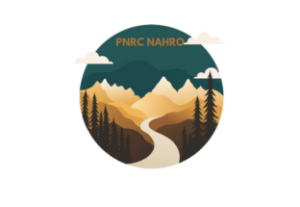Is your enterprise software provider making it easy on you?
The second topic in our “Ten ways to tell if your enterprise software provider is open” series is about making it easy. This idea is not about making it easy for the sponsor of the ecosystem, but rather, making it easy for the client. The sponsor must take full responsibility for developing, testing and supporting integrations between their own products and the partner products in their ecosystem. This is a turning point for how enterprise software providers approach the market.
Enterprise software provider history to date
From the beginning of “enterprise software time,” there has been a fundamental debate about how clients should approach software.
On one hand, there are the providers of broad sets of integrated solutions, which are known as suites. On the other hand, there are providers of narrow, deep solutions, which are also called point solutions. Typically, this argument is thought of as “integrated” versus “best-of-breed.” The comparative value proposition is “buy it all in one place” or “buy better features” – broader versus deeper.
Reflecting on this, however, uncovers a blind spot in both approaches. Neither of these sides are focused on the space between them, which is where the integrations necessary to make it all work together exist. Historically, the problem of integration is typically left to the client, who, by definition, does not differentiate itself competitively based on their software integration competency.
If the suite providers don’t focus on enabling their suite for integration, then the point solution providers are forced to create less than ideal integrations, potentially limiting their full capabilities and, in turn, limiting the value that the client can derive.
The dawning of the “and” era
This idea of integrated versus best-of-breed is rooted in the very fabric of enterprise software thinking across the globe. However, it’s always presented as “integrated or best-of-breed” when it needs to be presented as “integrated and best-of-breed.”
With increasingly pervasive use of cloud-based SaaS models, dynamic API layers and all the necessary modern protocols and protections, “integrated and best-of-breed” is possible and it’s truly in the hands of the core enterprise software provider to enable it.
My former colleagues at Gartner – those who coined the term ERP – have defined Postmodern ERP as “a technology strategy that automates and links administrative and operational business capabilities with appropriate levels of integration that balance the benefits of vendor-delivered integration against business flexibility and agility.”
In layman’s terms: Get value from integrated suites while also enabling the use of best-of-breed products.
The point solution providers will be ready, willing and able to engage once the platform is made more open. The core enterprise software provider is in complete control of the choices and actions to enable their ecosystem. Simply providing a limited set of APIs and some documentation is not equivalent to “enabling an open ecosystem.” This tactic feels too much like the “do-it-yourself” model that has not successfully delivered the “and” in “integrated and best-of-breed.” These core providers do just enough to claim they can integrate without actually doing much.
Core providers should be actively working with their software product partners to develop APIs that enable specific needs. Together, they should work on the development and testing of the integrations across versions and new releases to ensure that the dynamic nature of enterprise software does not disturb the flow of information between platforms. This makes it easy on the client by removing the burden of integration development and maintenance.
Once built, that same core provider should be the first point of contact for support and troubleshooting related to the integration. This way, the client will always know who to call for assistance.
Making things easy for the client is not always easy. It requires dedicated resources for development, testing, documentation and support. It requires a true commitment to the success of the client as evidenced by the successful integration with the partners of choice.
Is your enterprise software provider making it easy on you?
20 Ways Companies are Transforming Their Offices
The office is undergoing its most radical transformation in a generation. Around the world, office culture and even the very concept of the office is changing. Organizations of all types are adapting their spaces to create a better working future. In…

